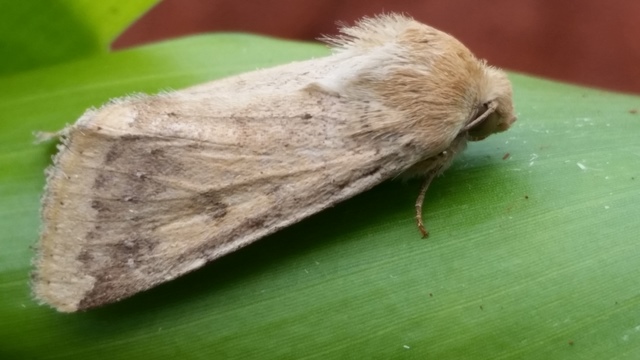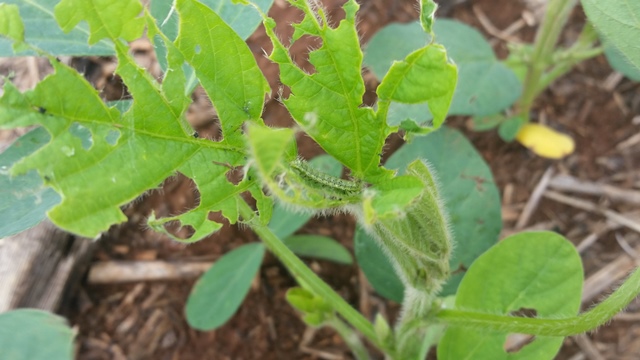Cover plants as allies
Important in helping to control weeds and pests such as nematodes, cover crops are great allies for the producer. However, it is necessary to make the correct choice for each environment.
Grow evidence of the presence of Helicoverpa hybrids in Brazil. Species caterpillar samples Armigera e Zea, collected in Mato Grosso and analyzed by researchers from United Kingdom and Australia, through complete genomic sequencing, confirm hybridization. The use of different integrated management tactics must be adopted to that phytosanitary problems resulting from this and other agricultural pests can be resolved in the best possible way.
Insects belonging to the Heliothinae family are among the most harmful agricultural pests in the world. Among the main representatives of this family are Helicoverpa armigera e H. zea, popularly called Caterpillar Old World Cottonworm and Corn Earworm, respectively. A world scientific community classified H. armigera as one of the pests with the greatest agricultural impact between the years of 2012 and 2016.
H. armigera is an extremely polyphagous pest, being recorded in more than 300 hosts, including cultivated plants, invasive and wild crops in different parts of the world, including crops such as cotton, soybeans, corn and tomatoes, while H. zea has a smaller number of hosts, 123 species, among these are also crops of great economic importance for Brazil, such as cotton, corn and tomatoes. Therefore, it can be said that there is a close and continuous relationship between the two species, mainly in annual crops. This situation can worsen even further in continuous cultivation systems, such as areas irrigated, thus creating the known “green bridges”, very common in regions agriculture in the Brazilian Cerrado.

Helicoverpa armigera e H. zea are morphologically similar species and molecular analyzes confirmed the similarity genetics between their genomes, which justifies the reported cases of hybridization between the two species. Approximately 1,5 million years ago, in the evolutionary timeline, H. armigera e H. zea shared a common ancestor, which explains this genetic proximity. The ability to hybridization between the Old World caterpillar (H. Armigera) and the New World (H. Zea), in producing fertile offspring have been clearly demonstrated in laboratory experiments since 1965, although such scenarios have become restricted to laboratory conditions only, prior to the recent arrival of H. armigera on the South American Continent. Through whole genomic sequencing, according to a study by the renowned CSIRO Institute in Australia, it was possible verify the existence of hybrid individuals from samples Brazilians.
In the recent study published in the international scientific journal Proceedings of the National Academy of Sciences of the United States of America (PNAS) researchers from the United Kingdom and Australia analyzed a small number of specimens from Mato Grosso, originally identified as H. armigera per through mitochondrial DNA, however, when complete sequencing of the genome, it was evidenced that these supposed “H. armigera” in fact they would be hybrids, with a variable amount of genetic contribution of H. zea. In addition Furthermore, another sample was also identified, as H. zea, from mitochondrial DNA, showed a large percentage of DNA H. armigera in your genome. Therefore, this genetic introgression can lead to the emergence of new ecotypes (presence of genetically unique populations that are adapted to their local environment) in the family Heliothinae.

An unprecedented and large-scale natural hybridization, began with the arrival of H. armigera in South America. Furthermore, this hybridization may have been occurring for longer longer than expected, since the entry of H. armigera in Brazil may have occurred much earlier than assumed in literature. Therefore, the precise assessment of the proportions of hybrids within certain agricultural systems will require full genome analysis due to the unpredictability of the hybrid genome, as there may be a contribution inequality of each of the parental species of helicoverpa over several generations.
Thus, the widely used method of rapid identification of species based on DNA “gene barcodings” inherited from the mother to differentiate between H. armigera e H. Zea, will be now ineffective, since this DNA marker cannot identify hybrids. Without count that with the possible existence of these hybrids, taxonomic identification cannot be used as a sole tool to confirm which species is being handled in the field. An unknown to be unraveled.
Given this scenario, some hypotheses can be outlined, regarding the future of the two most important species of helicoverpa, in Brazil. These include:
Of course, only time will tell, but there are some signs that the species originals are gradually disappearing and are being discovered. However, still are just speculations, so these studies must be increasingly encouraged and researchers from all Brazilian institutions, public and private sectors, must come together so that these and other challenges arising from agriculture can be solved in a way that benefits agriculture throughout the country.
The impact of these hybrids on agriculture is still unknown. Brazilian, but the potential for agricultural damage caused by hybrids and both parental species is of concern, as is the evolution of resistance to the different chemical insecticides available on the Brazilian market. What is certain is that the plague needs to be monitored and our borders must be be kept under continuous surveillance, as countless other countries do. A biosecurity needs to be reinforced to minimize opportunities for new incursions by other populations from the Old World and genetically distinct, as recent literature has shown that important agricultural pests such as H. armigera and the White fly bemisia tabaci entered in the country on several occasions and brought genes resistant to agrochemicals. In addition In addition, we need to understand that Brazil can become a "exporter" of resistant individuals to other countries, further complicating global efforts to manage the impact on agricultural production systems.
O use of different integrated pest management tactics should be adopted to that phytosanitary problems resulting from this and other agricultural pests can be resolved in the best possible way, without increasing the costs of production in the country. It is worth remembering that pests like H. armigera cannot be controlled by relying solely on chemical tools, as has been observed in recent years following your official identification. A real change in practices and habits in in relation to what is being adopted in the field to control this pest are urgently needed, and this must be carried out in conjunction with the updated genomic knowledge of the pest regardless of its status hybrid. There are numerous tools that can be used together to effectively reduce damage caused by pests such as helicoverpa, which have already been discussed extensively in last years. Although these methods and tools have not been widely adopted in the fields, their efficiencies in controlling crop hybrids helicoverpa will also need evaluation through research effort. It is worth remembering that only the investment in scientific studies and, consequently, knowledge can guarantee more sustainable harvests in the future.
Cecilia Czepak, Goias Federal University; Wee Tek Tay, CSIRO Black Mountain Laboratories; Humberto O. Guimaraes, Corteva Agriscience; Tiago Carvalhais, Matheus Le Senechal, Rafael F. Silvério, Goias Federal University
Article published in issue 229 of Cultivar Grandes Culturas, June 2018.

Receive the latest agriculture news by email
Important in helping to control weeds and pests such as nematodes, cover crops are great allies for the producer. However, it is necessary to make the correct choice for each environment.
In HortiFruti crops, the demand for fertilizers and water is very high, making it necessary to observe some basic principles for the efficient management and use of these inputs, especially in the stages prior to planting.